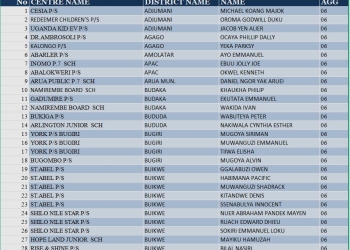
Prosecutors said Lydia Mugambe, 49, took “advantage of her status” over her victim by preventing her from holding down steady employment and forcing her to work as her maid.
OXFORD, England — The conviction and subsequent six-year and four-month prison sentence handed down to Ugandan High Court Judge Lydia Mugambe in the United Kingdom last Friday is a multifaceted case that extends beyond a simple narrative of exploitation. A closer examination reveals a confluence of factors, including a potential clash of legal and cultural norms surrounding domestic labor, compounded by a meticulously documented trail of digital communication that exposed a determined effort to obstruct justice. The case underscores the complexities that can arise when legal frameworks rooted in one cultural context intersect with individual understandings shaped by another, particularly when amplified by the pervasive reach of digital technology.
Justice Mugambe, a respected human rights lawyer and sitting judge in Uganda who had earned a scholarship to pursue advanced studies at Oxford University, found herself accused of luring a young Ugandan woman to the UK under the guise of work, ultimately subjecting her to forced labor. The Crown Court at Oxford, under Judge David Foxton, meticulously laid out the evidence of a premeditated scheme involving the manipulation of UK immigration laws. This involved the creation of false documentation and the unwitting participation of a Ugandan diplomat, John Leanord Mugerwa, who agreed to falsely sponsor the victim’s visa. The court determined that Justice Mugambe, as a student visa holder, had no legal basis to bring someone to the UK to work for her.
However, the genesis of the relationship between Justice Mugambe and the victim in Uganda offers a crucial point of analysis. Mugambe had initially employed the then 19-year-old woman as a nanny and maid, providing her with accommodation and even supporting her education. This arrangement, while perhaps viewed within a certain socio-economic context in Uganda as an act of benevolence or reciprocal assistance, appears to have been interpreted through a markedly different lens by the UK legal system. The expectation that this informal arrangement could simply be transplanted to the UK, without adherence to the UK’s robust labor laws and immigration protocols designed to protect vulnerable workers, suggests a potential disconnect in Justice Mugambe’s understanding of these legal and ethical boundaries. This is not to excuse the exploitation, but rather to highlight the potential for differing cultural norms surrounding domestic help to create a chasm of understanding when subjected to a foreign legal framework.
Adding a layer of undeniable culpability was Justice Mugambe’s subsequent attempt to interfere with the legal process. Following her release on bail, with explicit instructions not to contact the victim, digital forensics unearthed a comprehensive and calculated campaign to dissuade the young woman from testifying. Messages recovered from Justice Mugambe’s electronic devices detailed a coordinated effort involving multiple individuals – her niece, a personal assistant, and a researcher – to reach the victim through trusted intermediaries in Uganda, including her pastor and her own mother. This digital footprint provided a clear and irrefutable record of her intent to obstruct justice.
Judge Foxton highlighted the sophistication of this intimidation attempt, spanning geographical boundaries and leveraging the victim’s personal relationships. This digital evidence not only demonstrated a clear breach of bail conditions, intended to safeguard a vulnerable individual, but also underscored a consciousness of guilt and a persistent pattern of manipulative behavior that echoed the initial exploitation charges. The fact that a judge, someone deeply familiar with the principles of law and justice, would engage in such a calculated attempt to subvert the legal process was a significant factor in the severity of the sentence. The court noted the profound impact these intimidation attempts had on the victim, fostering anxiety, isolation, and even suspicion towards individuals within her own community.
While Judge Foxton acknowledged Justice Mugambe’s prior contributions to human rights in Uganda, including her notable work on maternal health rights, he emphasized that her professional standing only amplified the gravity of her offenses in the UK. The digital evidence, in this context, served as an unassailable record of her post-offense conduct, directly contradicting any potential arguments for leniency based on her previous career.
The case of Justice Mugambe serves as a cautionary tale about the critical importance of understanding and adhering to the specific legal and ethical standards of a host country, particularly when it comes to labor and immigration. Furthermore, it underscores the increasingly pivotal role of digital evidence in modern legal proceedings. In this instance, the electronic communications not only provided crucial insights into the defendant’s intent but also painted a damning picture of her efforts to evade accountability, ultimately shaping the court’s decision in a significant way. The intersection of potentially differing cultural understandings of labor with the undeniable clarity of the digital footprint created a complex case that ultimately resulted in a substantial jail sentence for a high-ranking judicial figure.

















